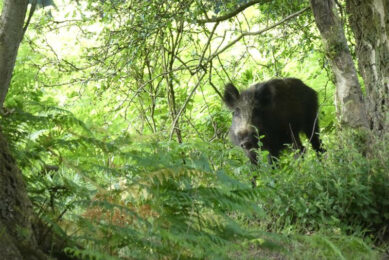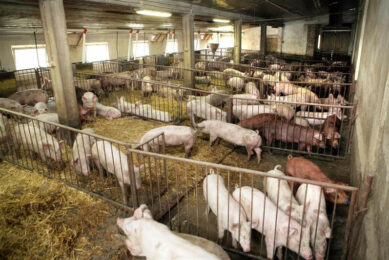ASF China: US-China trade deal; FAO says virus in Indonesia

A welcome relief for both China and the US happened last Friday when the countries announced a relaxation of their trade war. That may eventually lead to a surge in Chinese purchases of US pork products – as the country has been deprived of pork due to African Swine Fever (ASF). Plus: what other news is there to report on with regard to ASF in China?
First things first – the US and China announced an agreement reducing some US tariffs in exchange for what US officials said would be ‘a big jump’ in Chinese purchases of American farm products and other goods. The top US trade negotiator stated that Beijing has agreed to import at least $ 200 billion additional US goods and services over the next 2 years on top of the amount it purchased in 2017. That would include $ 32 billion in farm products over 2 years, or $ 16 billion per year.
China: agricultural deal is agreed
At a news conference in Beijing, Chinese officials said the 2 sides had agreed on the text of a deal. China will import more US wheat, corn, and rice, China’s vice agricultural minister said, according to news agency Reuters.
US president Donald Trump called it a ‘very large phase one deal with China’. The 86-page agreement is due to be signed the 1st week of January in Washington by principal negotiators.
The US pork industry has suffered from tariffs being placed on US goods since the beginning of a trade war between the 2 countries, which has been going on for 17 months. Due to ASF, an estimated 60% of the country’s pig inventory has disappeared, meaning a large demand from China for pork from elsewhere. So far, the US has not been able to really profit from that demand.

US scientists revealed a promising discovery on the way to an ASF vaccine
China: Gangs spreading rumours about ASF?
A remarkable news item was published by news agency Bloomberg: Chinese criminal gangs would be spreading rumours about ASF to scare farmers into selling pigs for cheaper. The news agency is quoting the magazine China Comment.
The article described how healthy animals are sometimes smuggled across provinces and resold at a higher price, the investigative report said. In some cases, drones would be used to drop infected feed into farms in a bid to buy pigs for cheap. The article also mentions practices like forging quarantine certificates and smugglers having bribed inspectors to look away from their illegal practices.
ASF outbreak reported in Shaanxi province
In the meantime, the total number of officially reported outbreaks in China and Hong Kong has risen to 169. The latest outbreak the Chinese authorities reported about took place in a village in Shaanxi province, where 9 wild boar were found to be infected with ASF.
It is widely believed that for a wide variety of reasons, there is underreporting going on in China. Only sparsely, outbreaks in China are reported by the Ministry of Agriculture and Rural Affairs (MARA) and subsequently to the World Organization for Animal Health (OIE).
FAO confirms ASF in Indonesia
The UN’s Food and Agriculture Organization (FAO) as well as the Indonesian government have now also confirmed that African Swine Fever has been discovered in the province North Sumatra. Indonesia’s agriculture ministry confirmed this on December 12; FAO has confirmed to be working together with the authorities to help contain the outbreaks.
That ASF had reached Sumatra already was clear since mid-November when local authorities confirmed the same. The authorities then stated the province had been suffering from a co-infection of African Swine Fever and Classical Swine Fever, and that an increased level of mortality was around since late September. About 4,000 pigs had to be culled.
ASF in South Korea
South Korea continues to report outbreaks of ASF in wild boar close to the border with North Korea. The country in total reported now 59 outbreaks, which include both commercial farms as well as individual findings of wild boar in the forest. The farm findings date from October; ever since it’s been mostly wild boar findings. The virus has spread along the border with North Korea for a distance of 130km.

Read more about pig health in the Pig Progress Health Tool
ASF in Russia
Also Asian Russia continues to report outbreaks of ASF along the border with China. The most recent ones include an outbreak in wild boar in Amurskaya region where 18 wild infected carcasses were found at one time.











